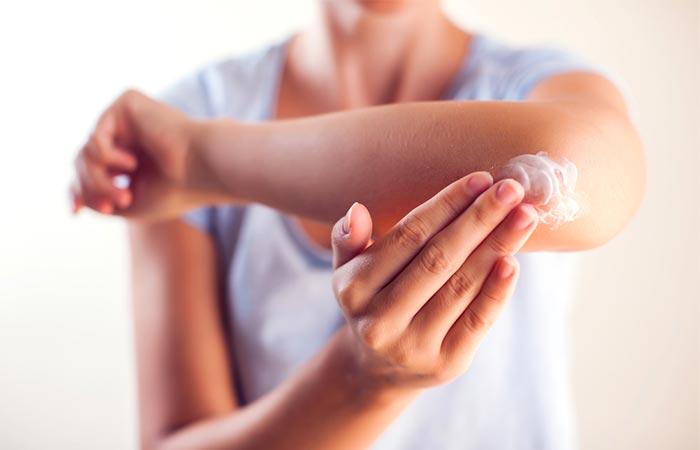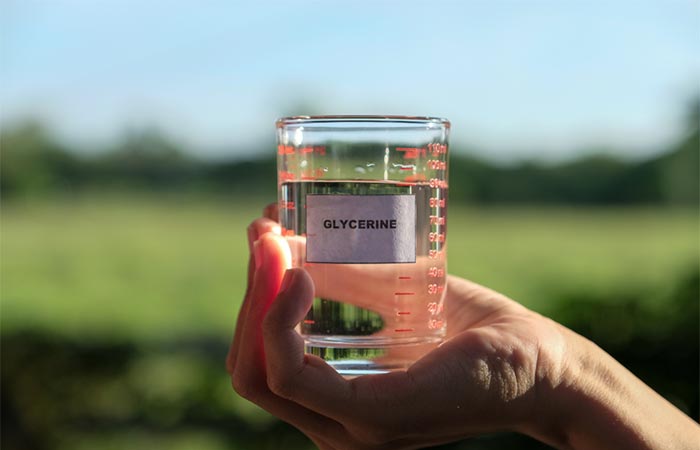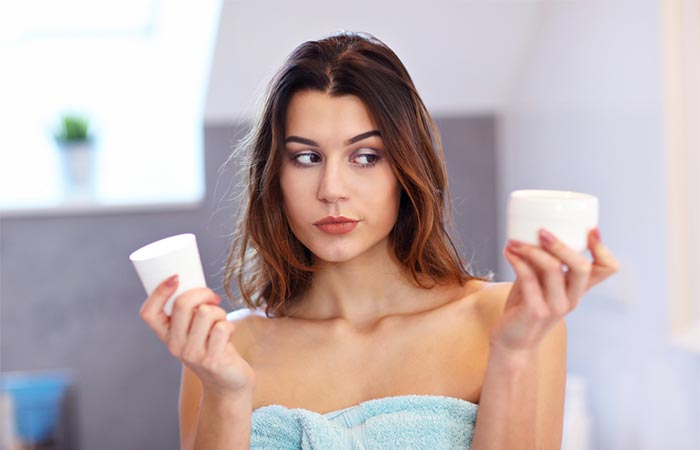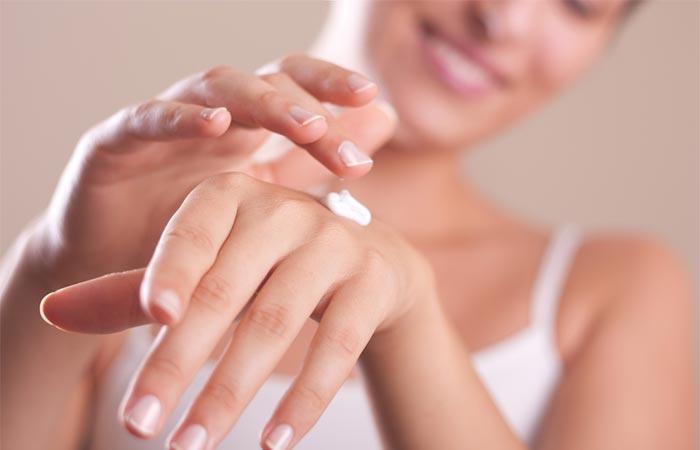If you take skin care seriously, you would have heard of humectants. In case you aren’t aware of what they are, fret not! In this article, we have decoded humectants and discussed how they could boost your skin health. Scroll down to find out.
What Is A Humectant?
A humectant is a hydrating agent found in creams, lotions, serums, conditioners, and several other skin care and hair care products. Humectants can attract and bind with the water molecules, helping your skin and hair preserve moisture and stay hydrated.
Humectants are of several types and not all function alike (we have discussed this later in the article). The way a humectant behaves often depends on the other ingredients of the product or the formula of the product. Accordingly, humectants can add to the overall benefit offered by the product. In the following section, we will discuss how they function.
How Do Humectants Work?
Think of a magnet and how it attracts iron. Similarly, humectants attract water. They draw water mainly from two sources (1):
- From the dermis into your epidermis (from the inner layer to the top layer of your skin)
- From the environment (while humid)
Humectants also help your hair draw moisture and retain it. However, not all humectants work for both skin and hair. That’s the reason you will not see the same humectants used in hair care and skin care products.
Humectants are great for keeping your skin soft, supple, and hydrated. Let’s take a look at the types of humectants that are available – those that we commonly see in products.
What Are Different The Types Of Humectants?
Humectants can be natural as well as synthetic. Skin care and hair care products may contain either of them. Most manufacturers prefer synthetic humectants over natural humectants as the former are cheaper. Though synthetic humectants perform the basic functions of a humectant and retain water, unlike natural humectants, they do not nourish your skin.
Some of the common natural humectants include:
1. Aloe Vera
This is one of the most effective naturally hydrating ingredients available. Studies have found it to be effective in skin hydration, possibly due to its humectant-like mechanism (2).
2. Honey
Honey is a natural ingredient that has multiple benefits. It is an excellent humectant, emollient, and hair conditioner. It is loaded with useful amino acids, minerals, enzymes, and vitamins that keep your skin healthy and smooth. Honey also helps soothe different skin conditions (3).
3. Glycerin
This one substance has both natural and synthetic equivalents. Synthetic or chemically derived glycerin is alcohol (Glycerol) that works as a humectant. Natural glycerin is derived from plant-based oils. It is an excellent humectant. A study showed that it could increase the hydration levels of the skin and keep it soft (4).
4. Tremella Fuciformis Extracts
These are extracts from Tremella mushrooms and are a popular ingredient in K-beauty products. Though the mushrooms are used as a culinary delight, their extracts are believed to be extremely hydrating.
5. Alpha Hydroxy Acids (AHAs)
These are naturally derived from plants and are mostly used in anti-aging formulations. Some common AHAs include glycolic acid, malic acid, lactic acid, and mandelic acid. AHAs exfoliate your skin, clearing the dead skin cells, so the moisturizers can seep deeper into your skin layers.
Some of the common synthetic humectants include:
1. Hyaluronic Acid (HA)
Though hyaluronic acid occurs naturally in your skin cells, the HA in skin care products is developed chemically. It is an excellent humectant that keeps the skin hydrated by retaining the moisture levels (5).
2. Urea
When used in lower concentrations (10%), urea is an excellent humectant. A study has shown that it can prevent transepidermal water loss (TEWL) and help your skin retain water and keep it hydrated (1). However, urea may also cause skin irritation, redness, itching, and a burning sensation.
3. Polyethylene Glycols (PEGs)
PEG 400 and PEG 600 are the common humectants (6). PEGs are petroleum-based compounds that work by pulling moisture from the deeper layers of the skin to the topmost layers. However, these might cause allergic reactions and dermatitis (7).
4. Sodium PCA
This substance works as a humectant and is mostly used in shampoos, conditioners, creams, lotions, foundations, and lipsticks. Usually, it is used in concentrations ranging from 0.2% to 4%.
Humectants are not the only moisturizing agents that we see in our products. There are some emollients and occlusives as well. Some humectants may not work well alone but give better results when paired with these emollients and occlusives. Although these might have similar properties, they are different from each other. Let’s find out how.
How Do Humectants Differ From Emollients And Occlusives?
Humectants, emollients, and occlusives are different types of moisturizers. These are often used alone or in combination in products for achieving optimal results. Although these three belong to the same category, they have their differences.
Class Of Moisturizers |
Humectants |
Emollients |
Occlusives |
How They Work |
Draw water either from the dermis (to a certain extent) or from the humid air. | Fill the rough area on the skin to make it smooth. Don’t affect the water content of the skin. | They create a barrier to trap water on the skin (either supplied to the skin by a moisturizer or when soaked in water). |
How They Feel |
Feel sticky (when used alone). | Feel nice on the skin. | Feel heavy on the skin. |
Side Effects |
A few might cause irritation (urea, lactic acid). | Rarely cause irritation. | Clog skin pores and may cause folliculitis and contact dermatitis. |
Examples |
Hyaluronic acid, urea, glycerol/ glycerin, and AHAs (lactic acid). | Squalene, cholesterol, ceramides, and fatty acids (oleic, linoleic, lauric acids). | Beeswax, mineral oils, silicones, zinc oxide, lanolin, dimethicone, and petroleum jelly. |
Now you know how humectants differ from the other types of moisturizers. Let’s understand how you can use humectants to moisturize your skin properly.
How To Use Humectants To Moisturize Your Skin Properly
Whether you are using products with humectants or any other type of moisturizing agent, there is a certain way to apply them. The National Eczema Association has some guidelines regarding proper moisturizing techniques (8):
- Apply the moisturizer right after bathing and while the skin is still damp. If you are using any skin medication, apply it first, followed by the moisturizer.
- Before applying, take some moisturizer in your palm and rub it.
- Apply it in a downward direction.
- Avoid rubbing it in an up-and-down motion or in circles.
- Always leave a film of moisturizer on the skin and let your skin absorb it.
Now that you know everything about humectants, here are some product suggestions for you.
Products With Humectants That You May Check Out
The type of humectant you pick depends on the needs of your skin. For instance, if you have oily and acne-prone skin, your skin will need something with salicylic acid or AHAs that can clear the dead skin cells. Also, you can get products with both humectants and occlusives if your skin needs intense hydration. Here are a few products that you can check out:
- Neutrogena Hydro Boost Water Gel – Buy it here!
- The Ordinary Lactic Acid 10% + HA 2% – Buy it here!
- Adamia Therapeutic Repair Lotion – Buy it here!
- Soo AE Donkey Milk Skin Gel Mask – Buy it here!
Each skin type has different preferences. When choosing a product with a humectant, try out different products until you find the one that makes your skin feel comfortable. Many prefer to mix and match products, while some like it the way they are. Before choosing any product, read the ingredients list carefully.
Do let us know which product you have picked! Leave a comment in the box below.
8 sources
- Moisturizers: The slippery road, Indian Journal of Dermatology, US National Library of Medicine, National Institutes of Health.
https://www.ncbi.nlm.nih.gov/pmc/articles/PMC4885180/ - Moisturizing effect of cosmetic formulations containing Aloe vera extract in different concentrations assessed by skin bioengineering techniques, Skin Research and Technology, US National Library of Medicine, National Institutes of Health.
https://www.ncbi.nlm.nih.gov/pubmed/17026654 - Honey in dermatology and skin care: a review, Journal of Cosmetic Dermatology, US National Library of Medicine, National Institutes of Health.
https://www.ncbi.nlm.nih.gov/pubmed/24305429 - Glycerol and the skin: holistic approach to its origin and functions, The British Journal of Dermatology, US National Library of Medicine, National Institutes of Health.
https://www.ncbi.nlm.nih.gov/pubmed/18510666 - Hyaluronic acid: A key molecule in skin aging, DermatoEndocrinology, US National Library of Medicine, National Institutes of Health.
https://www.ncbi.nlm.nih.gov/pmc/articles/PMC3583886/ - Influence of some humectants on the physical characteristics of solidified sodium stearate-based sticks, International Journal of Cosmetic Science, US National Library of Medicine, National Institutes of Health.
https://www.ncbi.nlm.nih.gov/pubmed/19469997 - Skin reactions to propylene glycol, Contact Dermatitis, US National Library of Medicine, National Institutes of Health.
https://www.ncbi.nlm.nih.gov/pubmed/233872 - Proper Moisturizing Techniques, National Eczema Foundation.
https://nationaleczema.org/proper-moisturizing-techniques/
The post Humectants – What Are They And How Do They Benefit Your Skin? appeared first on STYLECRAZE.
from STYLECRAZE https://ift.tt/2lMCCuR
via IFTTT






No comments:
Post a Comment